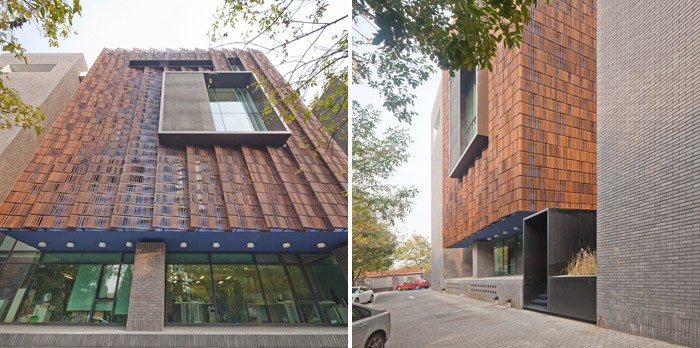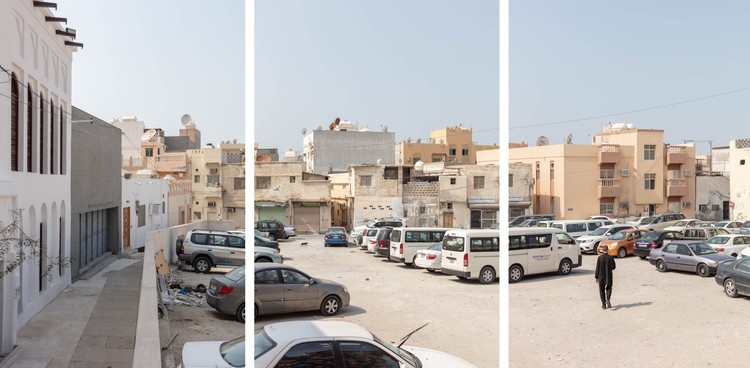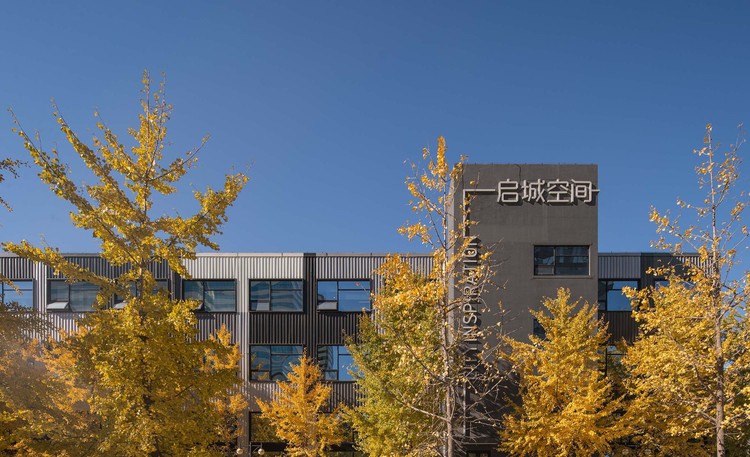Matraville Residence TZANNES
2018-12-10 17:00
架构师提供的文本描述。这座位于悉尼东郊的新一代290平方米住宅,为双亲、祖父母、两个成年子女、一个女朋友和两只狗的家庭设计,是我们在典型的郊区公寓(四分之一英亩的1/2)背景下重新思考“美好生活的艺术”的一个机会。
Text description provided by the architects. Designed for a family of two parents, a grandparent, two adult children, one girlfriend, and two dogs, this new inter-generational 290 sq m home in the eastern suburbs of Sydney was an opportunity for us to rethink the ‘art of living well’ in the context of a typical flat suburban block (1/2 of quarter acre).
Text description provided by the architects. Designed for a family of two parents, a grandparent, two adult children, one girlfriend, and two dogs, this new inter-generational 290 sq m home in the eastern suburbs of Sydney was an opportunity for us to rethink the ‘art of living well’ in the context of a typical flat suburban block (1/2 of quarter acre).
光线充足,空气清新,这座住宅重新想象了郊区的住宅,并尝试了新的多代生活模式…。。
Light-filled and airy, this dwelling re-imagines the suburban home and experiments with new modes of multi-generational living….
Light-filled and airy, this dwelling re-imagines the suburban home and experiments with new modes of multi-generational living….
位于距悉尼市中心约九公里处,周围的郊区是沙质和郊区,由战前用红色和肝色砖组成的平房定义。在这类场地上进行翻新的通常形式是将边界建在边界上,使居民只能有限地接触阳光,减少视觉和声音隐私,并提供很少的交叉通风。
Located about nine kilometres from the centre of Sydney, the surrounding suburb is sandy and suburban, defined by inter-war bungalows in red and liver coloured brick. The usual form of renovation on this kind of site is to build boundary to boundary, in a way that leaves the residents with limited access to sunlight, reduces visual and acoustic privacy, and provides little cross ventilation.
Located about nine kilometres from the centre of Sydney, the surrounding suburb is sandy and suburban, defined by inter-war bungalows in red and liver coloured brick. The usual form of renovation on this kind of site is to build boundary to boundary, in a way that leaves the residents with limited access to sunlight, reduces visual and acoustic privacy, and provides little cross ventilation.
我们开始重新定义郊区的模式,设计提供最佳的舒适性,仔细的空间规划,激活整个场地,并创建一系列相互关联的室内和室外空间,打开房子后面的一个广阔的花园和游泳池。一个主要的考虑因素是这个家庭的三代人能够生活在一起,但又有隐私,这样很多人就可以在房子里呆在一起,而不觉得他们在一起了。“
We set out to redefine the suburban paradigm with a design that provides optimal amenity, careful space planning, activates the entire site and creates a flowing series of interconnected indoor and outdoor spaces that open onto an expansive garden and pool at the rear of the house. A main consideration was for the three generations of this family to be able to live together, yet have privacy, so ‘that a lot of people can be together in the house without feeling that they are on top of each other. ‘
We set out to redefine the suburban paradigm with a design that provides optimal amenity, careful space planning, activates the entire site and creates a flowing series of interconnected indoor and outdoor spaces that open onto an expansive garden and pool at the rear of the house. A main consideration was for the three generations of this family to be able to live together, yet have privacy, so ‘that a lot of people can be together in the house without feeling that they are on top of each other. ‘
同样重要的是,在这个郊区的环境中,周围的房屋往往密集地挤在一起,我们想要建造一座对邻居“有礼貌”的房子,尊重他们的隐私和舒适,但同时也表明,好的设计很重要。
Equally importantly in this suburban context, where the surrounding houses are often densely packed together, we wanted to make a house that would be ‘polite’ to its neighbours, respectful of their privacy and amenity, yet one which makes a statement that good design matters.
Equally importantly in this suburban context, where the surrounding houses are often densely packed together, we wanted to make a house that would be ‘polite’ to its neighbours, respectful of their privacy and amenity, yet one which makes a statement that good design matters.
最初,我们调查了与现有建筑一起工作的情况。然而,这一建议被驳回,因为最初的填脊和未阐明的计划意味着无法获得所需的便利设施和太阳能通道。相反,只保留了街区后部的现有游泳池和花园,在北侧插入了一个新的内部庭院,以确保冬日的阳光直射。
Initially, we investigated working with the existing building. However, that was dismissed because the original ridged and unarticulated plan meant the required amenity and solar access could not be achieved. Instead, only the existing pool and garden at the rear of the block were retained, with a new internal courtyard inserted to the north to ensure direct sunlight in midwinter.
Initially, we investigated working with the existing building. However, that was dismissed because the original ridged and unarticulated plan meant the required amenity and solar access could not be achieved. Instead, only the existing pool and garden at the rear of the block were retained, with a new internal courtyard inserted to the north to ensure direct sunlight in midwinter.
客户的简报要求主卧室、套间和衣柜位于一楼,以便父母只能住在一层楼。其余的卧室位于二楼,朝东,还有一个共用的浴室、书房和第二个起居室,旨在让多代人住在房子里。
The clients’ brief called for the main bedroom, ensuite and wardrobe to be located on the ground floor, so that the parents can live on one level only. The remaining bedrooms are on the second floor, east facing, along with a shared bathroom, study and a second living room, designed to enable multigenerational living in the house.
The clients’ brief called for the main bedroom, ensuite and wardrobe to be located on the ground floor, so that the parents can live on one level only. The remaining bedrooms are on the second floor, east facing, along with a shared bathroom, study and a second living room, designed to enable multigenerational living in the house.
我们的建筑语言是刻意的最低限度,与白色袋砖底座和一个黑色的轻型屋顶与大背窗,这是功能和大胆/挑衅,否则相当平淡的街景。二楼的大部分是通过屋顶的形式,它的重要性和使用宿舍尽量减少。内饰的调色板是坚固和经济,与非形式的混凝土,暴露木材萝卜和白色墙壁设计,以补充周围的花园。
Our architectural language is deliberately minimal, with the white bagged brick base and a dark lightweight rooftop with large dormer windows that is both functional and bold/provocative in the otherwise rather bland streetscape. The bulk of the second floor is minimized by the roof form, its materiality and the use of the dormers. The interiors palette is robust and economical, with off form concrete, exposed timber rafters and white walls designed to complement the surrounding garden.
Our architectural language is deliberately minimal, with the white bagged brick base and a dark lightweight rooftop with large dormer windows that is both functional and bold/provocative in the otherwise rather bland streetscape. The bulk of the second floor is minimized by the roof form, its materiality and the use of the dormers. The interiors palette is robust and economical, with off form concrete, exposed timber rafters and white walls designed to complement the surrounding garden.
早期和适当地整合被动和主动设计要素对于降低建造成本和尽量减少运行开支至关重要。我们的目标是在夏天没有太阳在玻璃上,但提供慷慨的太阳能进入南面的客厅,并有效地利用交叉通风。被动因素包括建筑物的定向方式,深凹的窗户,深沉的悬垂,最大限度地利用交叉通风的建筑物开口,以及顶楼顶部的天花板,这些天花板能将高层的热空气和风驱动的通风器提取出来。活动元件包括可操作的外部百叶窗,功率增强屋顶风扇,节能A/C,高等级绝缘和精心选择的颜色和材料。
Early and proper integration of passive and active design elements was essential to reducing built cost and minimizing running expenditure. We aimed to have no sun on glass in summer, yet give generous solar access to south facing living rooms and make effective use of cross ventilation. Passive elements include the way the building is oriented, deeply recessed windows, deep overhangs, building openings that maximise cross ventilation, and ceilings on the top floor that extract hot air at high level and wind driven ventilators. Active elements include operable external blinds, power boosted roof fans, energy efficient A/C, high grade insulation and carefully selected colors and materials.
Early and proper integration of passive and active design elements was essential to reducing built cost and minimizing running expenditure. We aimed to have no sun on glass in summer, yet give generous solar access to south facing living rooms and make effective use of cross ventilation. Passive elements include the way the building is oriented, deeply recessed windows, deep overhangs, building openings that maximise cross ventilation, and ceilings on the top floor that extract hot air at high level and wind driven ventilators. Active elements include operable external blinds, power boosted roof fans, energy efficient A/C, high grade insulation and carefully selected colors and materials.
Location Sydney, Australia
Design Architect Mladen Prnjatovic
Project Architect Connor Denyer, Thomas Hale
 举报
举报
别默默的看了,快登录帮我评论一下吧!:)
注册
登录
更多评论
相关文章
-

描边风设计中,最容易犯的8种问题分析
2018年走过了四分之一,LOGO设计趋势也清晰了LOGO设计
-

描边风设计中,最容易犯的8种问题分析
2018年走过了四分之一,LOGO设计趋势也清晰了LOGO设计
-

描边风设计中,最容易犯的8种问题分析
2018年走过了四分之一,LOGO设计趋势也清晰了LOGO设计















































































































